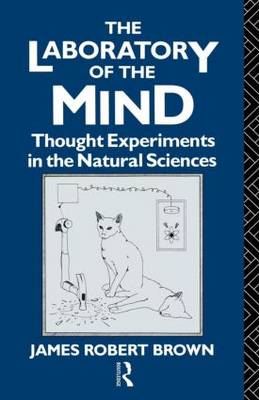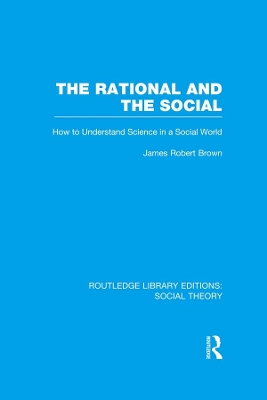Philosophical Issues in Science
4 total works
* the mathematical image
* platonism
* picture-proofs
* applied mathematics
* Hilbert and Godel
* knots and nations
* definitions
* picture-proofs and Wittgenstein
* computation, proof and conjecture.
The book is ideal for courses on philosophy of mathematics and logic.
Thought experiments are performed in the laboratory of the mind. Beyond this metaphor it is difficult to say just what these remarkable devices for investigating nature are or how they work. Though most scientists and philosophers would admit their great importance, there has been very little serious study of them. This volume is the first book-length investigation of thought experiments.
Starting with Galileo's argument on falling bodies, Brown describes numerous examples of the most influential thought experiments from the history of science. Following this introduction to the subject, some substantial and provocative claims are made, the principle being that some thought experiments should be understood in the same way that platonists understand mathematical activity: as an intellectual grasp of an independently existing abstract realm.
With its clarity of style and structure, The Laboratory of the Mind will find readers among all philosophers of science as well as scientists who have puzzled over how thought experiments work.
But this volume is not wholly devoted to combating Rorty and others who blow smoke in our eyes; the second half is concerned with arguing that there are some amazing ways in which science mirrors the world. The role of abstraction, abstract objects and a priori ways of getting at reality are all explored in showing how science reflects reality.
Smoke and Mirrors is a defence of science and knowledge in general as well as a defence of a particular way of understanding science. It is of interest to all those who wish or need to know how science works.
To paraphrase Marx, sociologists have only interpreted science; the point is to improve it. The Rational and the Social attempts both. It begins by sketching recent sociological approaches to science, notably the strong programme – Bloor’s ‘science of science’ and Barnes’s ‘finitism’ – and that of the ‘anthropologists in the lab’, Collins and Latour and Woolgar. The author argues that although sociological accounts are valuable in many respects, when morals are drawn about the structure and epistemology of science, they are badly flawed. In rejecting the sociological theory of science, it is not necessary to conclude that science develops without reference to the social. James Robert Brown argues for an alternative account. He proposes a novel way of viewing the history of science as a source of evidence for how to do good science and argues that the most important aspect of methodology is that it is comparative. Rival theories are evaluated by comparison and the contribution of the social to this process is inevitable and should be acknowledged. This is the challenge to science.


